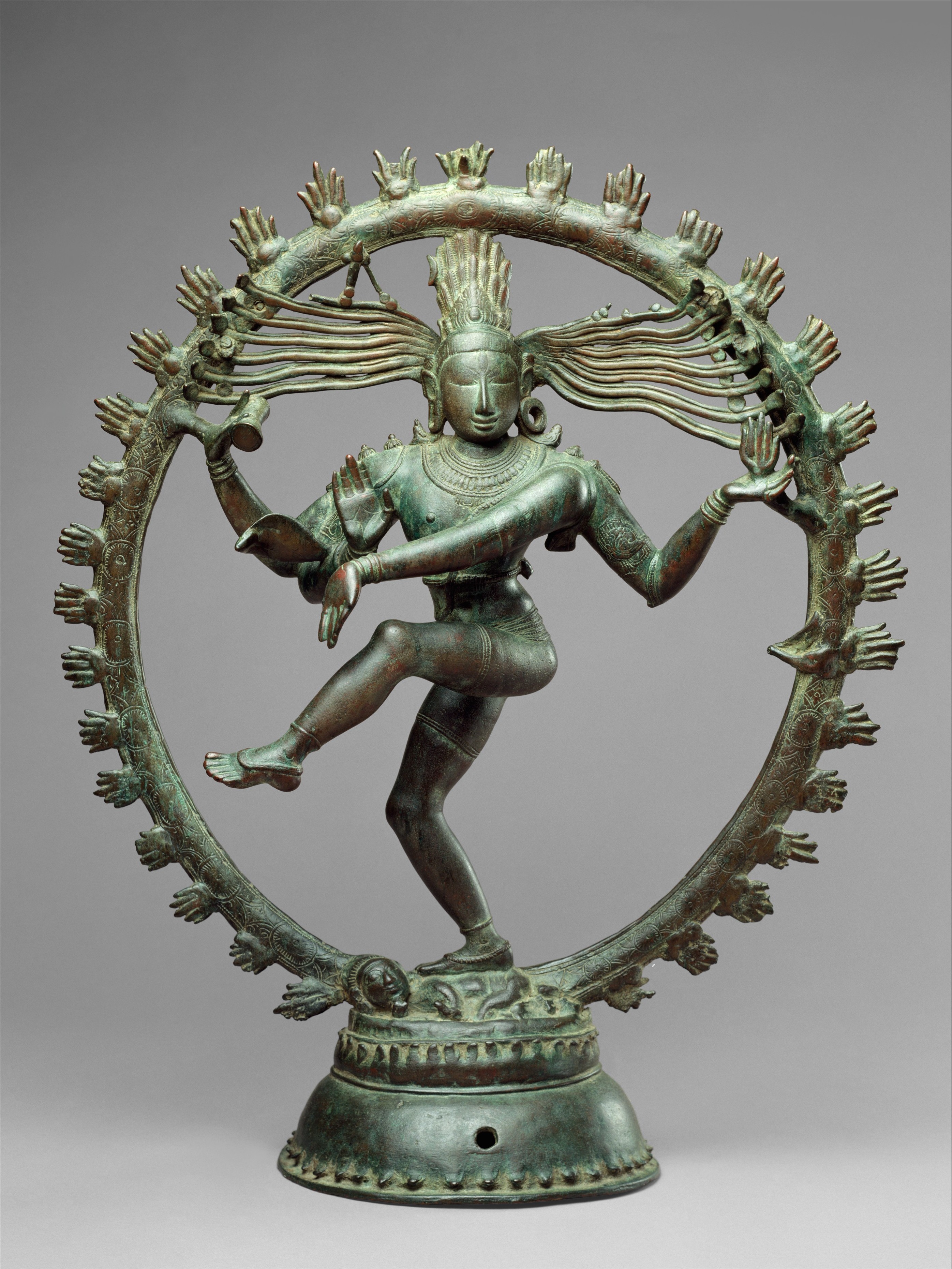THE LORD OF DANCE: NATARAJ

The Nataraja statue is a famous and iconic representation of Lord Shiva, a principal deity in Hinduism. It is one of the most recognized and revered sculptures in Indian art and culture. The Nataraja statue depicts Lord Shiva in a dynamic and cosmic dance pose, symbolizing various aspects of Hindu spirituality and philosophy.
Key features and symbolism of the Nataraja statue include:
-
Dance of Creation and Destruction: The Nataraja dance is believed to symbolize the cosmic dance of creation, preservation, and destruction. Lord Shiva, in this form, is often referred to as "Nataraja," which translates to "Lord of the Dance." His dance represents the continuous cycle of birth, death, and rebirth in the universe.
-
Tandava and Lasya: The dance posture can be divided into two main aspects: the "Tandava" and "Lasya." The Tandava represents the fierce and masculine aspects of Lord Shiva, associated with destruction, while the Lasya represents the gentle and feminine aspects, associated with creation.
-
Fire and Destruction: Lord Shiva is often depicted with flames surrounding him, signifying his control over fire, symbolizing both the destructive and purifying aspects of fire in Hindu belief.
-
Cosmic Circle (Aureole): The Nataraja statue is often encircled by a circular aureole or ring of flames, representing the cyclical nature of time and the universe.
-
Raised Foot: In some depictions, one of Lord Shiva's feet is raised above the demon Apasmara, symbolizing the triumph of divine knowledge (Shiva's dance) over ignorance (represented by the demon).
-
Four Arms: Lord Shiva in the Nataraja form typically has four arms. The upper right hand holds a "Damaru" (drum), representing the sound of creation. The upper left hand holds Agni (fire), symbolizing destruction. The lower right hand is in the "Abhaya Mudra" (fear-not gesture), signifying protection, and the lower left hand points to the uplifted foot, directing devotees to seek salvation.
-
Crescent Moon: A crescent moon is often depicted on Lord Shiva's matted hair, symbolizing the passage of time and the waxing and waning of the moon.
- All three temples the Bharat Mandapam Nataraja statue is inspired from were originally constructed by the Cholas, who at their peak around the 9th-11th centuries AD, ruled over much of peninsular India
- The Cholas were great patrons of art and high culture
- Chola art and architecture in South India was a product of a prosperous, highly efficient empire during the period of its greatest territorial expansion
- The Cholas were devout Shaivites, building elaborate Shiva temples (like the one in Thanjavur) across their territories
- Among icons which form the most important part of Chola sculpture, Shaiva figures predominate…although very fine Vaishnava and Jain images are not unknown
- Although Shiva was first portrayed in sculpture as Nataraja in the fifth century AD, its present, world-famous form evolved under the Cholas
- The Nataraja image in its various forms…holds the first place among Chola bronzes
- While stone images of Nataraja are not uncommon, it is the bronze sculpture that has had the greatest cultural resonance through the years.
- Shiva, as he is worshipped today, evolved from the Vedic deity Rudra. In many ways, he is the most complex god of the Puranic pantheon
- Shiva is also the ‘Lord of Dance’ or Nataraja, who is said to have “invented no less than 108 different dances, some calm and gentle, others fierce, orgiastic and terrible
- In a typical portrayal, Nataraja is encompassed by flaming aureole or halo, which Sastri interpreted as “the circle of the world which he [Nataraja] both fills and oversteps”. The Lord’s long dreadlocks flare out due to the energy of his dance, and he strikes a rhythmic pose with his four arms
- In his upper right hand He holds a damru (a hand drum), whose sounds “draw all creatures into his rhythmic motion”, and in his upper left arm, he holds agni (fire), which he can wield to destroy the universe
- Beneath one of Nataraja’s feet lies crushed a dwarf-like figure, representing illusion, which leads mankind astray
- Yet, amidst all the destructive symbolism, Nataraja also reassures, and shows Shiva as the Protector.
- With his front right hand, he makes the ‘abhayamudra’ (a gesture that allays fear), and with his raised feet, and with his front left arm he points to his raised feet, asking his devotees to seek refuge at his feet.




